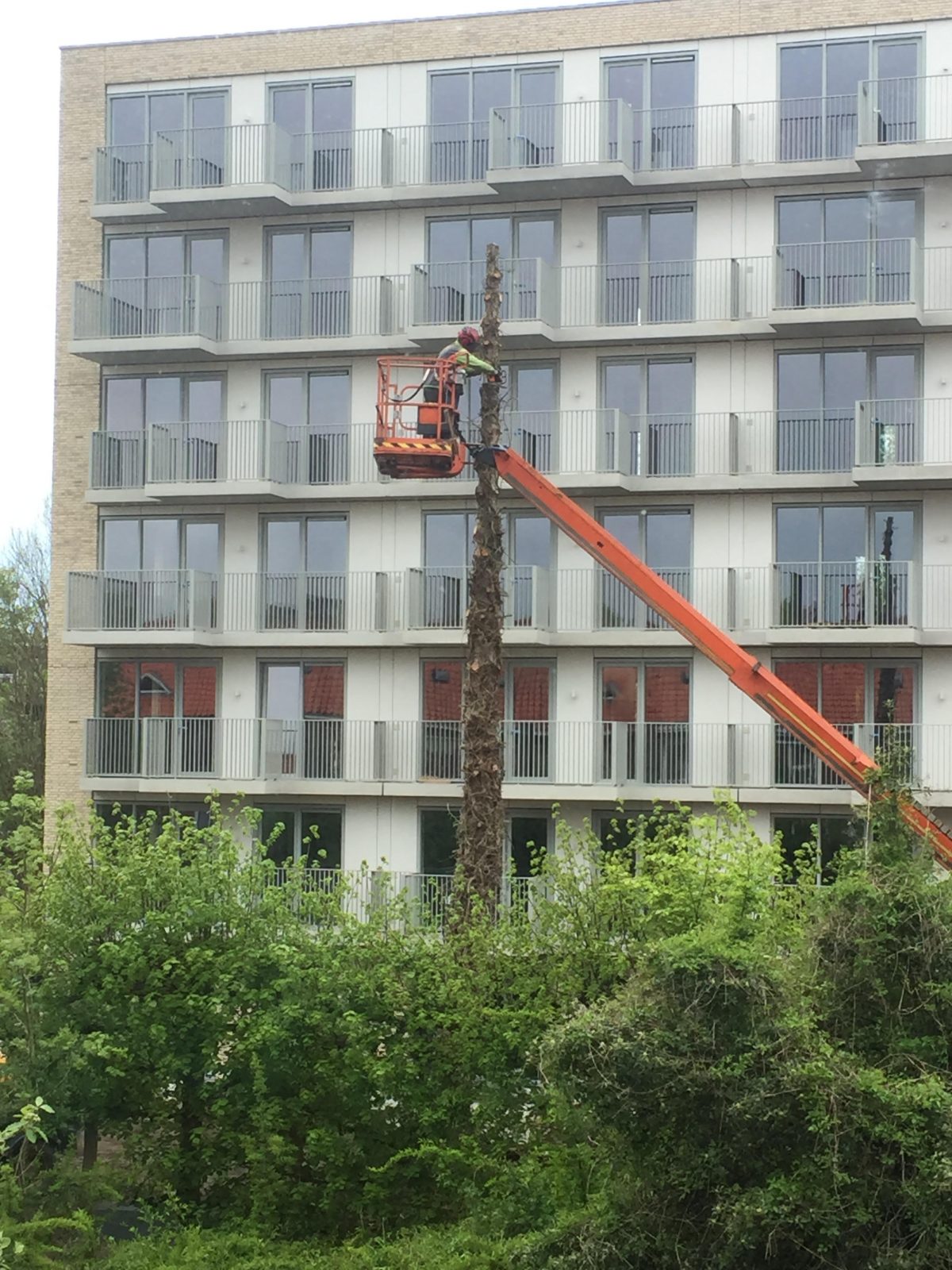Kristin McGee
22 sept 2021
Today after reading flagrantly false figures published by the municipality and then hearing them happily reproduced by some of the city council members, I’d like the set the record straight. Having taken the time to actually review these figures, it is abundantly clear that no-one has decided to cross-check the tables presented by the city’s green division with the records published on the official registration platform (Officielebekendmakingen.nl).
Let’s make some comparisons.
Here are the figures presented by the municipality giving a positive balance of 320 trees over the last two years:
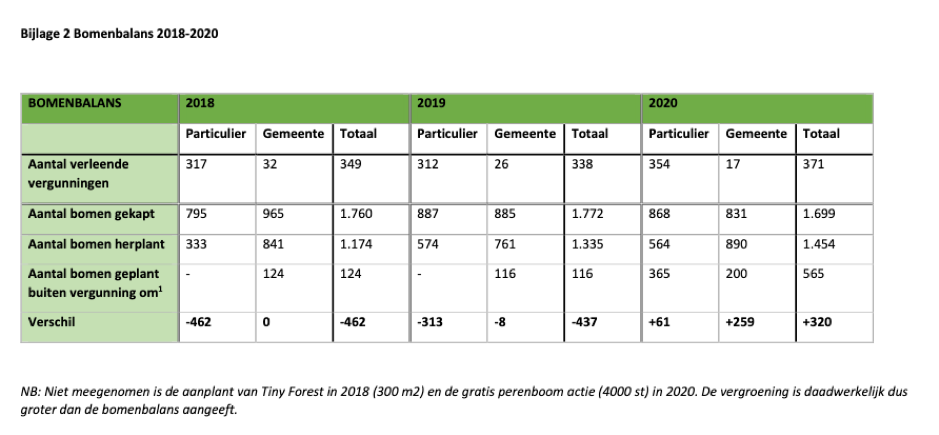
Actual tree permits
Let’s start with the actual number of both permits and numbers of trees permitted in 2018-2020.
If you go to Offielebekendmakingen, you can search the permitted tree removal requests after a year has passed using the search term “verleende vergunningen” (permitted removal) for a particular year and municipality and then exclude all tree removal requests by typing “-aanvragen” (-requests). I’ve done this and then made screen shots below to indicate numbers of permits. I’ve then checked each one individually and removed all rejected tree removal requests as well as non-permit related requests.
Here are screen shots of these search results:



These are the numbers that I arrived at after looking at each one of these 1186 permits for trees for 2018-2020.
When we compare the figures of trees planted claimed by the municipality with trees removed, we get a negative balance of -738:
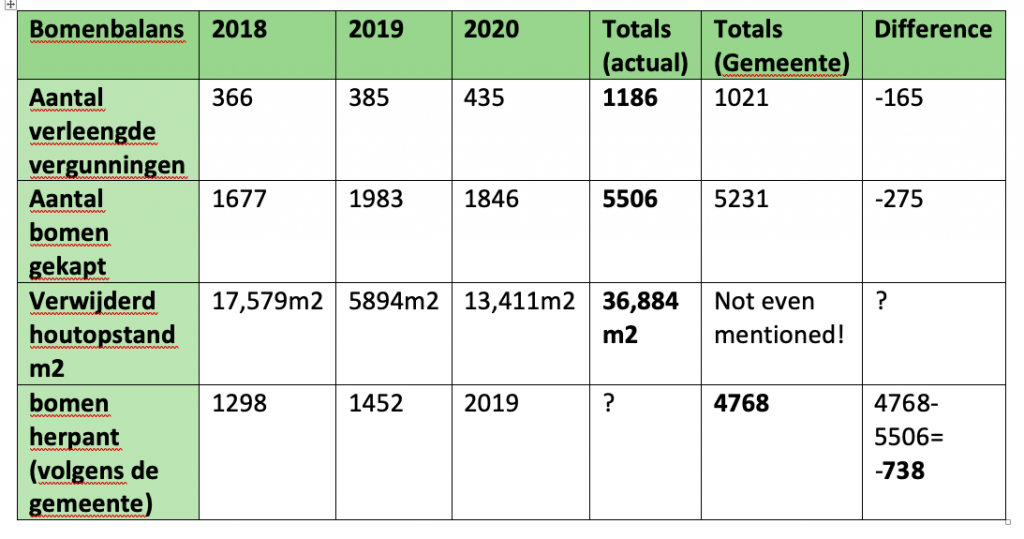
Wooded areas not included
In short, this is not a positive balance but a negative balance. In fact several hundred more trees have been cut which don’t require permits (some of these will be detailed in a future report). Also worrisome, is that none of the wooded areas (‘houtopstanden’) which are mentioned in permits are mentioned in this balance. These areas are some of the most important for climate resources (water filtration, greenhouse gasses, cooling), for habitat, and for urban ecosystems connecting people to nature, yet our ‘green hearted’ city tree managers fail to even mention them. We’ve checked them ourselves and found that 36884 m2 of wooded areas were removed. This is almost six football fields of wooded areas in two years.
Further, what is evident when looking at individual permits is that some don’t name the numbers of trees and simply list “vellen bomen,” so we don’t always know how many trees were removed in particular permits with mistakes such as these, nor do we gain any more pertinent information about the reason for permits, the age of the tree, size, or level of vitality.
Measuring the urban tree cover of Groningen is not a distant fantasy but a simple and relatively inexpensive request from an urban tree taxonomist
The continued presumption of the inability to really measure our urban tree canopy cover or the benefits of individual trees reveals a lack of basic knowledge of the field today. In a matter of hours, we could measure every single tree in Groningen – all trees: private, municipal, in parks, by train tracks, in the UMCG. It is not difficult nor extremely expensive with methods combining different measures such as LIDAR, google earth, and remote laser sensing. We’ve asked repeatedly that the municipality do this and even invited Cobra Groen to provide a workshop to show us how easy it is. Why do they still refuse this modest investment in our future?
Actual figures are already known about Groningen’s tree cover and numbers of trees
In fact, during a workshop with Cobra Groen who has measured all the trees in the municipal proper in 2019, we learned that there are about 243,000 trees total in the municipality. We also know that our current tree cover ratio is about 12% and in the province it is about 8%. If we wanted to know how much of this cover has been lost recently, for a variety of reasons ranging from disease to the massive mobility projects (aanpak ring zuid) and building projects (de Dilgt in Haren etc), we only have to commission this information and we could view these changes over a particular time period and then project our goals into the future based on past patterns (and mistakes). In other words, we could learn from what has happened rather than continue a policy which is perpetually reactive.
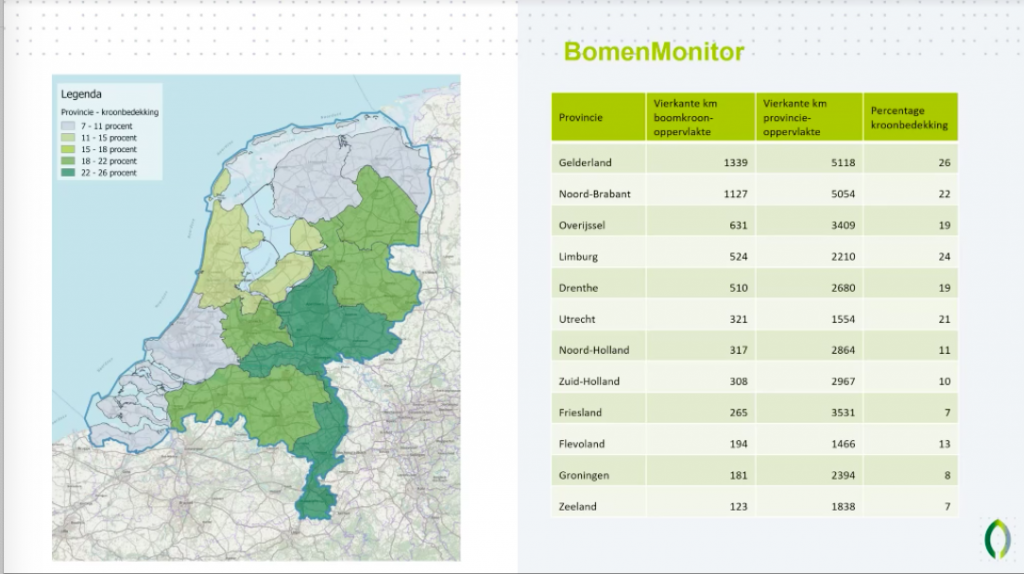
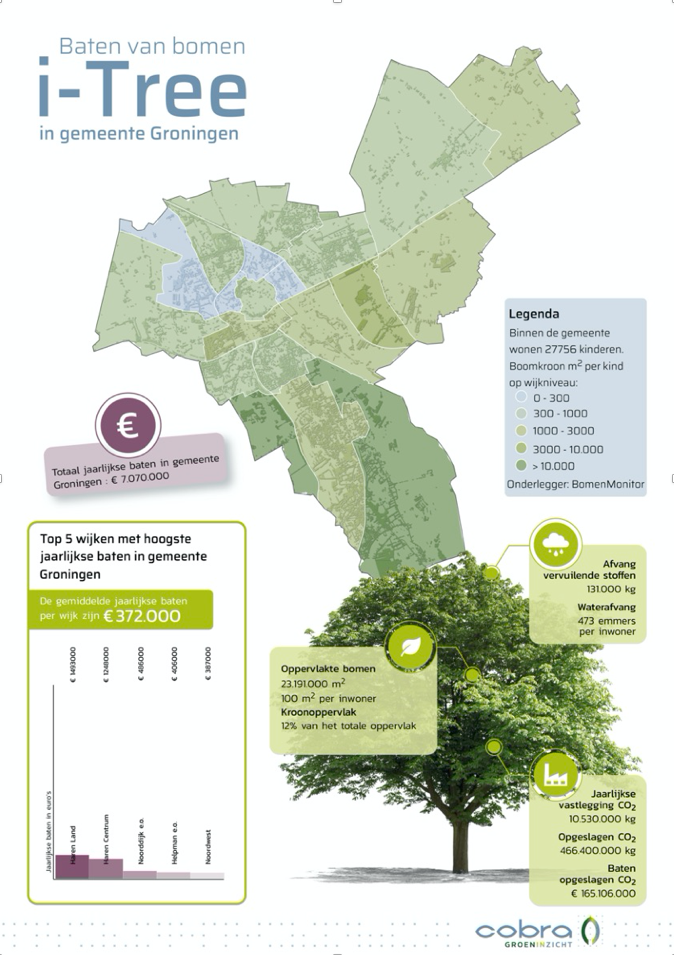
Green expertise, not green hearts
The endless reassurances of the “green hearts” of our tree workers is maddening when we ourselves have had multiple conversations over the last six years with the actual tree workers on the street, many of whom cynically admit that it is the municipality’s economically driven policies or the corruption of bureaucrats which are perversely stimulating the felling of healthy mature trees or motivating overly pruned canopies (which die much younger and provide little habitat for birds etc). Such removals and pruning methods are often employed simply to harvest extra word for local biomass heating units or to offer contracts for many of the local tree worker affiliates of the city’s tree club.
We are not claiming that there are never dangerous of terminally diseased trees or that no trees ever require felling, but rather that until now, many and perhaps more than half of all trees removed are done so without proper justification and these trees could have better been left to grow further. How do we know this, because we have visited locations with tree experts before trees were cut. We have contracted independent urban tree ecologists to evaluate the pruning and tree care here in the last five years. This evidence will be forth coming in a comprehensive report.
Role of private trees for our urban forest future
A significant number of the 5500 trees removed between 2018-2020 are private residential trees, of residents who simply don’t want a (large) tree any more for various reasons. These range from removing trees because they block sun for newly installed solar panels or because they drop too many leaves or because space is needed for enlarged tiled gardens or extensions of houses. The municipality generally allows all of these requests and even sometimes allows illegal tree felling on private properties to go unpenalized. We find this unacceptable and we hope that the municipality take a more proactive, knowledge based role in recognizing the necessity of private, corporate, and municipal trees comprehensively for the urban forest. If we simply ignore residential and non-municipal trees, we ignore much of our local tree cover in Groningen, a resource we can not afford to disregard in this critical period.

